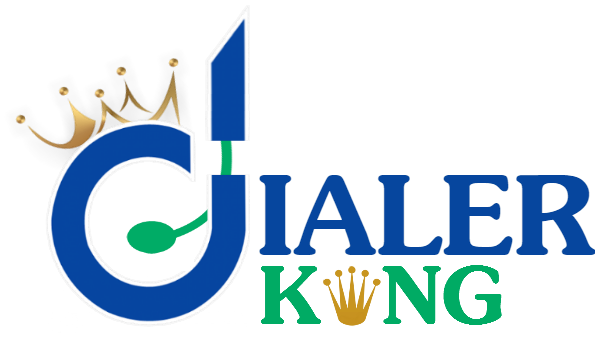
In this guide, we will discuss the top trends and innovations in contact center solutions that Telecommunication businesses need to know.
What are Contact Center Solutions?
Contact center solutions are technology platforms that enable businesses to manage interactions with their customers across various communication channels, such as voice, email, chat, social media, and messaging. These solutions provide a centralized hub for managing customer interactions and help businesses provide a seamless and consistent customer experience across all channels.
Contact center solutions can be deployed on-premises, in the cloud, or through a hybrid model. These solutions have become increasingly popular due to their flexibility, scalability, and cost-effectiveness.andle routine tasks, such as call routing and appointment scheduling, freeing up agents to focus on more complex interactions. Automation can also be used to reduce wait times for customers, by providing them with self-service options such as chatbots or IVR systems.
Virtual and Augmented Reality
Virtual and augmented reality technologies are being used in contact centers to provide more immersive experiences for customers. For example, VR can be used for virtual product demos, while AR can be used for real-time remote support.
Gamification
Gamification is the process of using game mechanics and design in non-game contexts to motivate and engage users. In contact centers, gamification can be used to motivate agents, track their performance, and provide incentives for achieving certain goals.
Analytics
Analytics is becoming an essential tool for improving contact center performance. Analytics involves analyzing data from customer interactions to identify trends and areas for improvement. This can include tracking metrics such as average handle time, first call resolution, and customer satisfaction.
By analyzing data from customer interactions, businesses can identify trends and areas for improvement.
Emotional Intelligence Contact centers are an essential part of the customer service ecosystem. They are the primary point of contact between customers and businesses, and are responsible for handling a wide range of interactions including calls, emails, social media messages, and live chats.
Telecommunications companies face unique challenges when it comes to managing their call center operations. They often deal with a high volume of calls, ranging from simple inquiries to complex technical issues. Customers expect quick resolutions and personalized service, and companies must ensure that their agents are equipped with the right tools and training to deliver on these expectations.
Over the years, contact center solutions have evolved significantly, thanks to technological advancements and changing customer expectations.
Contact center solutions typically include a range of features and tools, such as:
Call Routing and Management
This allows incoming calls to be routed to the appropriate agent or team based on various criteria, such as language, skill level, or customer profile.
Interactive Voice Response (IVR)
This allows customers to interact with an automated system to perform tasks, such as retrieving account information, making payments, or scheduling appointments.
Omnichannel support
This allows customers to contact businesses through various channels, and agents can manage all interactions in a single interface.
Customer Relationship Management (CRM) Integration
This allows agents to view customer data and interaction history in real-time, enabling them to provide personalized support.
Analytics and Reporting
This provides insights into customer behavior and enables businesses to measure key performance indicators (KPIs) such as call volumes, wait times, and customer satisfaction levels.
Workforce management
This helps businesses manage and schedule agents, forecast demand, and optimize staffing levels.
Quality management
This enables supervisors to monitor and evaluate agent performance and provide coaching and feedback.
What Do You Mean by Innovation in Contact Center Solutions?
Innovation in contact center solutions refers to the introduction of new or improved technologies, processes, or features that enhance the capabilities and performance of contact center operations. Innovation in contact center solutions is driven by the need to provide a better customer experience, increase operational efficiency, and improve agent performance.
Innovation is critical for businesses to stay competitive and meet the ever-changing needs of customers. By adopting innovative technologies and processes, businesses can enhance the capabilities of their contact center solutions, improve customer experience, and increase operational efficiency.
Top Trends and Innovations in Contact Centre Solutions
Omnichannel Support
Customers expect to interact with businesses through a variety of channels, including phone, email, social media, and live chat. It also allows customers to switch between channels without losing context. This means that if a customer starts a conversation on live chat and then switches to phone, the agent handling the call will have access to the chat history, allowing them to provide a more personalized experience.
To meet these expectations, contact centers are shifting towards omnichannel support, which allows customers to seamlessly switch between different channels while maintaining context. This means that if a customer starts a conversation on live chat, they can continue the same conversation on phone without having to repeat themselves.
Artificial Intelligence
Artificial intelligence (AI) is becoming increasingly important in contact center solutions. AI-powered chatbots and virtual assistants can handle simple customer queries, freeing up human agents to focus on more complex issues. AI can also be used to analyze customer interactions and provide insights that can be used to improve the customer experience.
Integration with CRM
Contact center solutions are integrating with customer relationship management (CRM) systems to provide agents with a complete view of customer interactions and history. This integration allows agents to provide more personalized and efficient customer service.
Personalization
Personalization is becoming a key factor in delivering great customer experiences. Personalization involves using customer data to provide a tailored experience. This can include using customer history to provide personalized recommendations, such as suggesting products based on previous purchases.
Personalization can also involve personalizing communication channels based on customer preferences, such as using social media for younger customers and email for older customers.
Contact center solutions are now using customer data to personalize interactions, including using customer history to provide tailored recommendations, and personalizing communication channels based on the customer’s preferences.
Customer Self-Service
Self-service options are becoming more popular among customers who prefer to resolve their issues without speaking to an agent. Contact center solutions are incorporating self-service options such as IVR (Interactive Voice Response), chatbots, and knowledge bases.
Cloud-based Solutions
Cloud-based contact center solutions are gaining popularity because they offer scalability and flexibility. Cloud-based contact center solutions offer scalability and flexibility, allowing businesses to easily accommodate growth and changing customer needs.
Cloud-based solutions can also be more cost-effective than on-premise solutions, as they do not require expensive hardware or software. Cloud-based solutions can easily accommodate a growing business, and can be accessed from anywhere, making it easier for remote teams to work together.
Predictive Analytics
Predictive analytics is becoming increasingly popular in contact centers. It allows businesses to predict customer behavior, anticipate their needs, and provide proactive support. Predictive analytics can also help businesses identify patterns in customer interactions and provide agents with recommendations for how to handle certain situations.
Automation
Automation is becoming increasingly important in contact center solutions. Automation can be used to hEmotional intelligence is becoming more important in contact center interactions. Contact center solutions are incorporating tools to help agents identify and respond to customers’ emotions, such as sentiment analysis and emotional recognition technology.
Voice Recognition
Voice recognition technology is becoming more accurate and reliable, and is being used in contact centers to identify customers and verify their identities. It can also be used to provide more personalized experiences by recognizing a customer’s voice and automatically routing them to their preferred agent.
Collaborative Tools
Collaboration is becoming increasingly important in contact center solutions, especially with remote teams becoming more common. Collaborative tools, such as team chat and video conferencing, allow teams to work together more effectively, regardless of location. This is particularly important for contact centers with remote teams, as it allows them to collaborate on customer interactions and share knowledge and expertise.
Collaborative tools can also be used to improve training and development for agents, allowing them to develop their skills more quickly.
Integration with Other Business Systems
Contact center solutions are being integrated with other business systems, such as ERP (Enterprise Resource Planning) and HR (Human Resources) systems, to provide a more holistic view of the customer and enable more efficient workflows.
Security
Security is becoming an increasingly important consideration in contact center solutions. With more and more customer data being shared, it is essential that businesses take steps to protect this data. Contact centers are now using advanced security protocols, such as multi-factor authentication and encryption, to keep customer data secure. They are also implementing strict data retention policies and conducting regular security audits to ensure that customer data is kept secure.
Innovative Contact Center Solution for Telecommunication Businesses:
Telecommunications companies are known for having high-volume call centers, often dealing with complex issues and providing a range of services. With this in mind, Dialerking, a leading provider of contact center solutions, has introduced its latest innovation to help telecommunication businesses improve their customer experience and operational efficiency.
The latest software solutions include advanced features such as:
Intelligent Call Routing
With intelligent call routing, our solution can direct incoming calls to the most appropriate agent based on factors such as language preference, skill level, and agent availability. This ensures that customers are connected with the right agent for their specific needs, leading to quicker resolution times and higher customer satisfaction.
Real-Time Analytics
Our real-time analytics feature provides businesses with valuable insights into their call center operations. This allows businesses to monitor call volumes, agent performance, and customer satisfaction levels in real-time, enabling them to make informed decisions about staffing levels, training programs, and other key areas of their call center.
Predictive Dialer
With Our predictive dialer feature, agents can connect with more customers in less time. This feature uses AI-powered algorithms to determine the best time to call customers, reducing the amount of time agents spend waiting for customers to answer, and increasing the number of successful connections.
Voice Biometrics
Our voice biometrics feature provides an additional layer of security for telecommunications companies. With this feature, agents can verify a customer’s identity using their voice, reducing the risk of fraud and improving customer trust.
Omni-Channel Support
With our omni-channel support, telecommunication businesses can manage customer interactions across multiple channels, including voice, email, chat, and social media. This ensures a consistent customer experience and provides customers with more options for contacting the company.
Conclusion
In conclusion, contact center solutions are constantly evolving to meet the changing needs of customers and businesses. The trends and innovations discussed in this guide highlight the importance of delivering a personalized, omnichannel experience, while also leveraging the power of automation, analytics, and collaboration.
Dialerking’s latest innovation in contact center solutions is a game-changer for telecommunication businesses. By adopting these trends and innovations, telecommunication businesses can improve their contact center performance, while also delivering great customer experiences.

